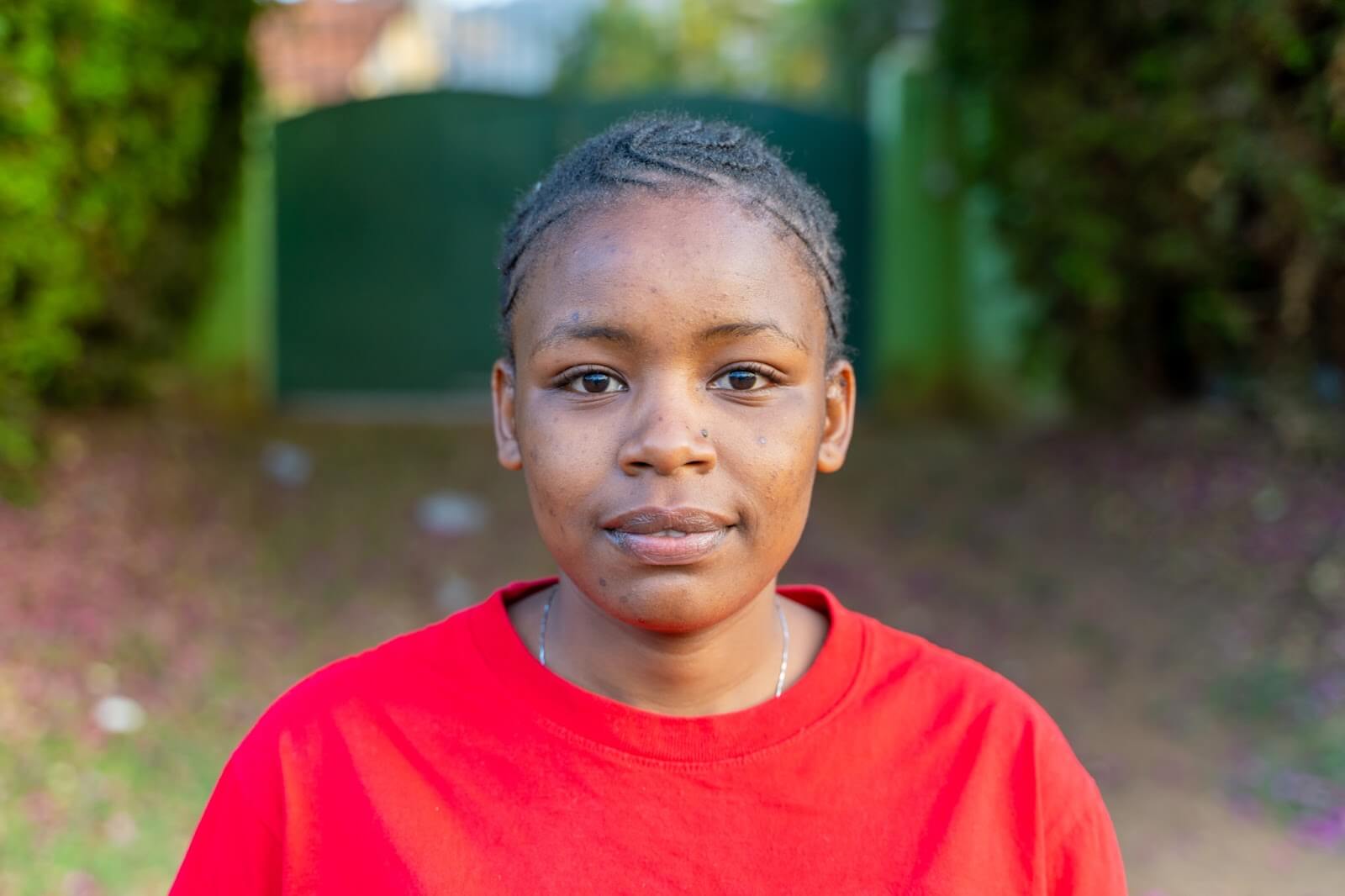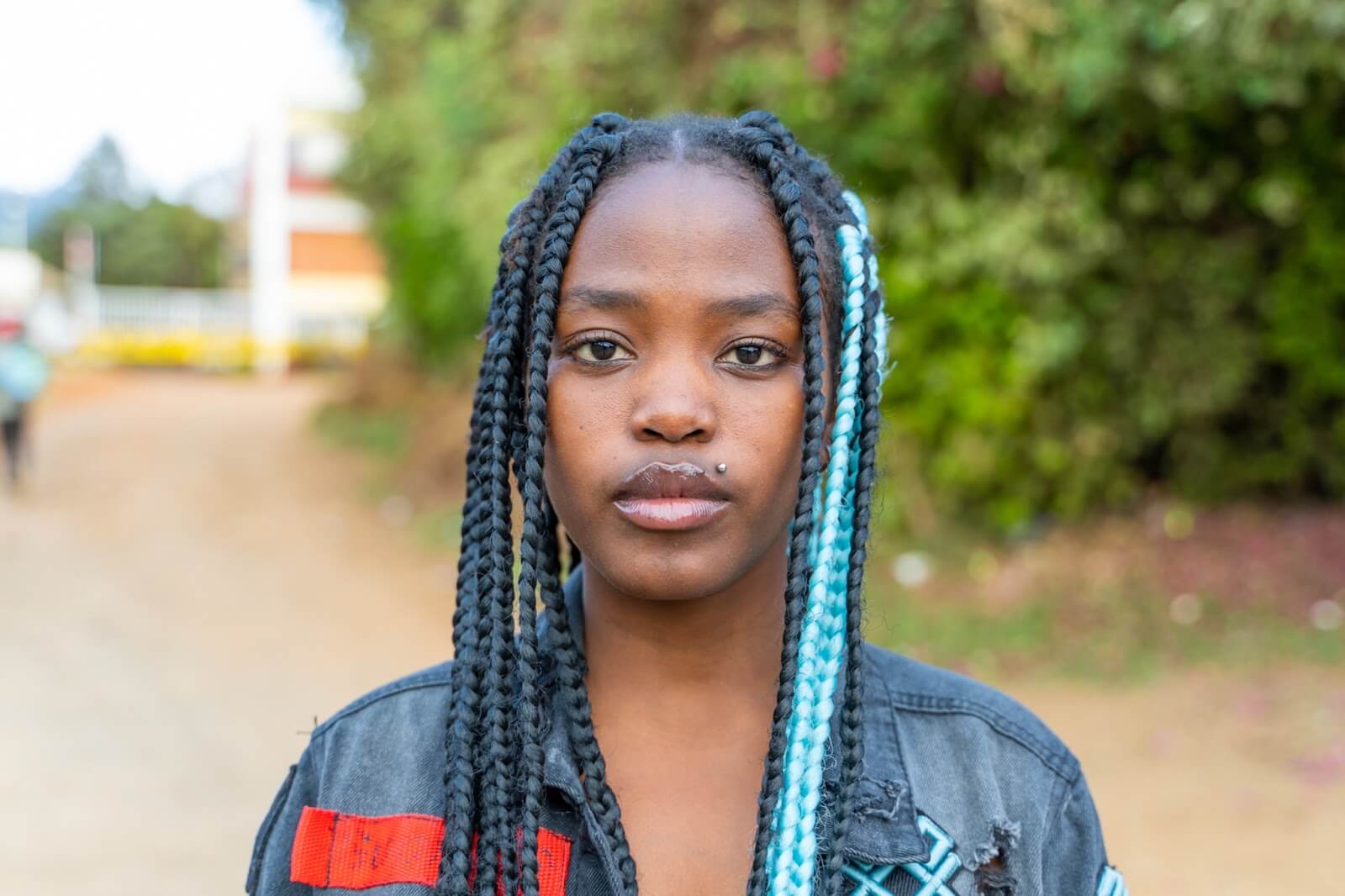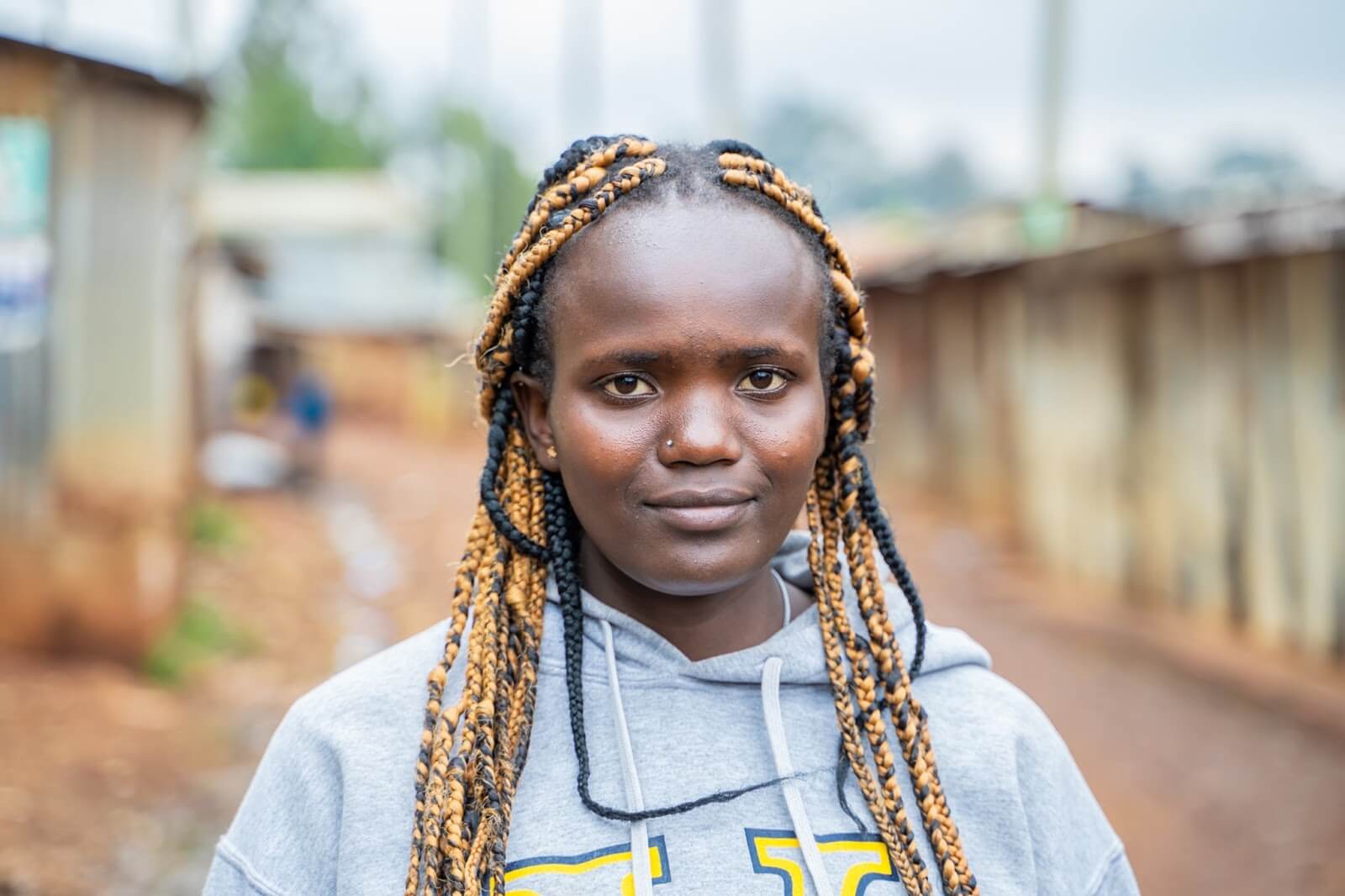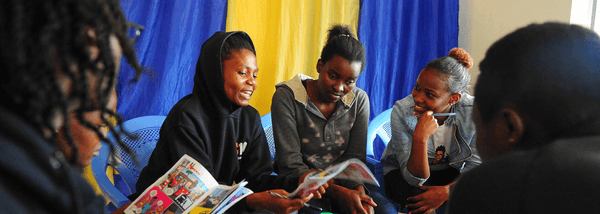My cousin was 14 when she had her first child. My mum was 12. I thought ‘No, I refuse to let my future be like that
This generation has big dreams. They want to finish school. They want to run their own businesses. They want to choose when or if to have children.
As for all of us, making those dreams happen can often depend on one thing: taking control of your sexual and reproductive health.
Over the last six years, we’ve seen a significant increase in young people doing exactly that: almost 9 in 10 young, sexually active Kenyans say they have now tried at least one method of modern contraception – like condoms, implants, injections or daily pills.
The context: Trial of modern contraception is up – but use is inconsistent
However, while the number of young people using contraception has risen, there remains a further 15% of young people who are sexually active, but who have never tried any form of modern contraception.24
And use of modern contraception isn’t yet consistent: while 85% of sexually active young Kenyans have tried a form of contraception, only 72% say they used one the last time they had sex.
As a result, Kenya continues to track high rates of teenage pregnancy (12% of 15-19 year-old girls said they had a child in 202225), with too many girls having children before they’d choose to.26
However, the young people we speak to say they want to decide when they have children. Awareness about available contraceptives is high: more than 9 in 10 young people can name one or more types of contraception without a prompt and 8 in 10 say they know where to find it. Costs are falling and most young people say they can access contraception for free or at a subsidised rate.27
So what are the barriers that are holding young people back from using contraception consistently, and building the future they want?

Conversations about the barriers to contraception are often centred around one topic: access. This was never more true than during the Covid-19 pandemic.
Like many organisations, we tracked a significant and concerning disruption in access to sexual and reproductive health services during the pandemic, as clinics were closed or repurposed, and supply chains were interrupted.
Covid-19 interrupted access to the contraceptives young people want
In 2020, there were widespread media reports that these disruptions in access, alongside wider lockdown measures, were resulting in a major increase in the rate of teenage pregnancy.
However, though we did hear reports from young people that they were having more sex than usual during lockdown and curfew measures (“there’s nothing else to do”), two years on, our data doesn’t evidence a significant change in teenage pregnancy rates. In fact, external development agencies30 31 have concluded the opposite, reporting that pregnancy rates among teenage girls declined in 2020 and have not since reverted to the pre-Covid-19 levels.32
While we did track some fluctuations33 in the types of methods used during the pandemic, our national survey data actually showed that, faced with so much social and economic uncertainty, young people were actually more committed to protecting themselves from pregnancy during the pandemic, than ever before.
The proportion of sexually active young people who reported that they didn’t use any form of ‘protection’ (which includes both ‘traditional’ methods like rhythm/safe days or withdrawal as well as modern contraceptives) the last time they had sex, fell sharply from 28% in 2017, to 8% in 2021 – and staying low at 9% in 2022.

Young Kenyans do report wider ‘access’ challenges. For example, we’ve been tracking a reduction in the use of girls’ preferred ‘long-acting method’: injectable contraceptives (girls’ preferred ‘long-acting method’) since 2019 as Kenya has suffered an on-going supply-chain challenge.34 Similarly, young people do talk about their concerns around the lack of privacy of accessing services in more public spaces, as well as inconsistencies in the quality of care at in-person clinics.35
However, as the Covid-19 pandemic has shown: it’s not a simple equation. Access does not equal use, and a disruption or challenge to accessing one method doesn’t always equal unprotected sex.
We have consistently seen that when young people have a clear motivation to protect themselves from pregnancy – like “who wants to get pregnant in an unstable pandemic?” or “having a baby right now would stop me from scaling my business” – they build the agency to take control and they find a way to protect their futures.
The big trend: The biggest impact on modern contraceptive use? What’s perceived as ‘normal’ among friends
As the chart above demonstrates, we’ve found that norm change is the most effective way to put girls in control of their future for the long term – outstripping education levels or earnings.
Let’s unpack that. Our research shows that if a girl believes that ‘most or all’ of her friends use modern contraception, it significantly increases the likelihood that she’ll use contraception the next time she has sex. Put another way: when we believe something is normal (that ‘people like me/my friends do X behaviour’) we feel it’s OK, even encouraged, to do the same.
But by the same token, our data also shows that if you’re a teenage girl in Kenya, and you believe that people like you and your friends don’t use contraception (or even that they shouldn’t) it significantly reduces the likelihood that you’ll feel comfortable using contraception the next time you have sex.
In Kenya there remain persistent, complex layers of negative social and cultural norms, and myths and misconceptions surrounding the use of contraception. From the belief that if you’re a girl in a ‘steady’ relationship who uses contraception, you must be sleeping around, to the persistent negative stigma surrounding sex before marriage. After 11 years of Shujaaz, we’re convinced that these negative norms are some of the biggest barriers preventing young people, and particularly girls, from taking control of their futures.
However, this ‘big trend’ also proves that we can break those barriers down. In fact, it means that you don’t have to be rich or educated or living in a city; if we can change the story about what’s ‘normal’ when it comes to contraception, you can find the motivation and the agency to take control of your future – no matter who you are. And that’s really good news.

Words matter: For young people, condoms aren’t ‘contraception’36
In Kenya, a young person can say “I don’t use contraceptives” and, in the next breath, talk about their preferred type of condom. That’s because for young people, it works like this:
‘Protection’ = easy to access traditional methods (rhythm days, withdrawal etc), condoms, P2 emergency pills
‘Contraception’ = long-acting methods like daily pills, an implant, an injectable or contraceptive coil that often require a clinic visit
For young Kenyans, using ‘protection’ allows you to protect yourself from STIs, or an unintended pregnancy – but nothing about it is permanent. ‘Protection’ gives you the flexibility to have kids straight away if you meet the right person, but it doesn’t change anything about you – your identity or your self-narrative. Crucially: you can use ‘protection’ and still think of yourself as a virgin – and that’s really important.
Using ‘contraception’ is viewed as a much more permanent change. It’s associated with adulthood – with people who’re actively planning a family. (Myths also remain that using one now might prevent you from having a child later.) To use ‘contraception’ therefore requires a much bigger decision, and more importantly a big identity shift.
The takeaway? Whether you’re asking questions or sharing information, if you’re working to support young people to choose the contraceptive method that’s right for them, words matter.
Where next: What young people need now
Norms are shifting – but far too slowly. For girls to unlock a better future for Kenya, they need to be able to use modern contraceptives with freedom and without fear.
Here’s a summary of what we think needs to happen next – and (since it’s a job for all of us) what we’re doing about it.
24 Research suggests that this group are likely to be younger, or that they’re likely to have only just started having sex. The Performance Monitoring Action Group (PMA) reports that it usually takes young people in urban areas 3.5 years from when they first start having sex to try contraception for the first time, and an average of 6 years for girls in rural areas. References: PMA2020 Kenya (November-December 2017) Adolescents and Young Adults Health Brief, PMA2020 - KENYA; Shujaaz Inc nationally-representative survey of Kenyan youth 15-24 years old Wave 2 (N=2,923), January-May 2017; Wave 3 (N=2,020), February-March 2018; Wave 4 (N=2,020), April-May 2019; Wave 5 (N=2,015), November 2020-January 2021; Wave 6 (N=2,006), November 2021-January 2022.
25 Shujaaz Inc nationally-representative survey of Kenyan youth 15-24 years old Wave 6 (N=2,006), November 2021-January 2022
26 In our SMS survey of N=706 Kenyan girls aged 15-19 (June 2020), 47% said the most appropriate age for the girls to become mothers for the first time would be 25 years old and above, while in reality 92% of girls get pregnant before they turn 25 years old and 51% get pregnant by the time they turn 18 years old.
27 Radovich E, Dennis ML, Barasa E, et al (2019), Who pays and how much? A cross-sectional study of out-of-pocket payment for modern contraception in Kenya, BMJ Open 2019;9. doi: 10.1136/bmjopen-2018-022414; The Star (May 10, 2017) Kenyan women to access cheaper contraception as prices reduce | Family Planning 2030.
28 Shujaaz Inc nationally-representative survey of Kenyan youth 15-24 years old Wave 3 (N=2,020), February-March 2018.
29 Shujaaz Inc nationally-representative survey of Kenyan youth 15-24 years old Wave 5 (N=2,015), November 2020-January 2021; Wave 6 (N=2,006), November 2021-January 2022.
30 E. Kahurani (June 26, 2020) Teen pregnancy in Kenya: Verifying the data and the facts - African Institute for Development Policy - AFIDEP.
31 Africa Check (September 3, 2020) Analysis: Much Ado about the Wrong Numbers – Decoding Kenya’s Teen Pregnancy “Surge”. Retrieved from https://africacheck.org/fact-checks/blog/analysis-much-ado-about-wrong-numbers-decoding-kenyas-te en-pregnancy-surge.
32 E. Kahurani (June 26, 2020) Teen pregnancy in Kenya: Verifying the data and the facts - African Institute for Development Policy - AFIDEP The latest available national data on teenage pregnancies were collected by the Kenyan National Bureau of Statistics as part of the DSH study in 2014. (Showing 16% of adolescent girls were mothers and 19% of adolescent girls were pregnant.) Until official national surveys are repeated, these early insights are only indicative.
33 The closure of public health clinics, which had enabled access to free and subsidised LARC, resulted in the reduction in use of such methods (e.g., the use of injectibles among sexually active females aged 15-24 went from 19% in 2019 to 12% in 2021). At the same time, the use of male condoms, which were easier to access, increased significantly among the same group of females – from 29% in 2019 to 39% in 2021.
34 Based on the Shujaaz annual surveys and qualitative studies, aside from male condoms, Kenyan girls aged 15-24 show preference for injectables as their contraception of choice, and they prefer to get injectables at public health clinics, where this contraception is free or heavily subsidised. Yet, public clinics are also subject to severe supply interruptions, e.g., P.N. Stephens and S. Alam (2021) Time series study of the sales of non-subsidised contraceptives in Kenya at times of public sector shortage: implications for future sustainability. African Journal of Reproductive Health. 25(3).
35 Shujaaz Inc Mystery Shopping Study, 2016.
36 A series of Shujaaz GroundTruth studies with Kenyans aged 15-24, 2018-2022; Ochako R, Mbondo M, Aloo S, Kaimenyi S, Thompson R, Temmerman M, Kays M. (2015) Barriers to modern contraceptive methods uptake among young women in Kenya: a qualitative study. BMC Public Health. 15(118). doi: 10.1186/s12889-015-1483-1.

